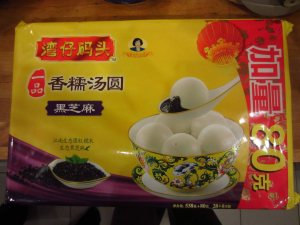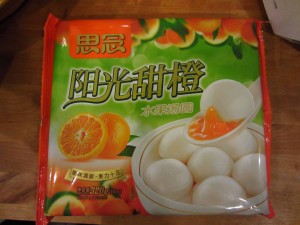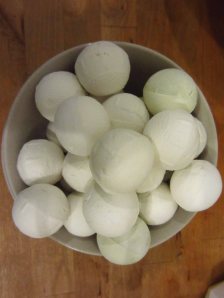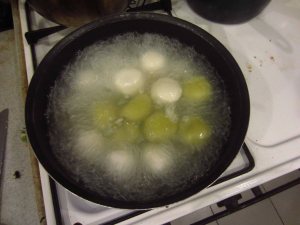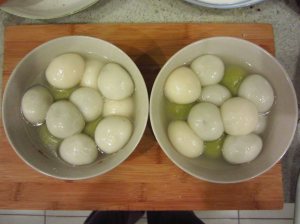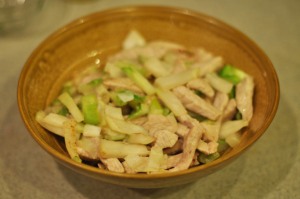The last day of Spring Festival is Lantern Festival. To celebrate this festival, everyone eats tāngyuán (汤圆-roughly translated as ‘soup balls’). I distinctly remember being introduced to these sticky balls many years ago in Australia. Our good Chinese friends kindly brought some over for dessert one evening. But, it was not a good memory. I remember the glutinous texture coating the inside of my mouth, making it difficult to swallow. And when I did swallow, I remember trying to hide the fact that it made me want to retch.
A lot has changed since then. I no longer turn my nose up at ‘red bean’ flavoured goods. Strangely-flavoured icypoles no longer gross me out. And tangyuan is now one of my favourite desserts. I’m not kidding.
The most common flavour is black sesame (黑芝麻 hēizhīma). And it’s super good. Not too sweet and you still have the graininess (??) of the sesame seeds.
However, of course, someone made non-traditional chocolate ones. And man, they are sooooooooooo good. These ones had little chunks of peanuts inside. If you’re looking to try tangyuan for the first time, go for these.
And of course, would it be a trip to a Chinese supermarket without me buying something silly? I ummed and ahhhed between strawberry and orange. I decided strawberry would probably be so super sickly sweet that I wouldn’t eat them, so orange it was. And the result? Glutinous fanta. That’s the only way to describe it.
They are so simple to cook too. Just throw them in boiling water for a few minutes until they rise to the surface.
Our local sichuan restaurant serves these boiled in a little bit of booze, and that’s also delish. I’m not sure what they use, but there’s definitely room for experimentation. And I should probably learn to make these too! Though the supermarket is a very easy option.
I was also told recently that there’s another type called yúanxiāo that are made with a special technique that can’t be replicated by hand. I’ll have to try these out next year… has anyone tried them before?


